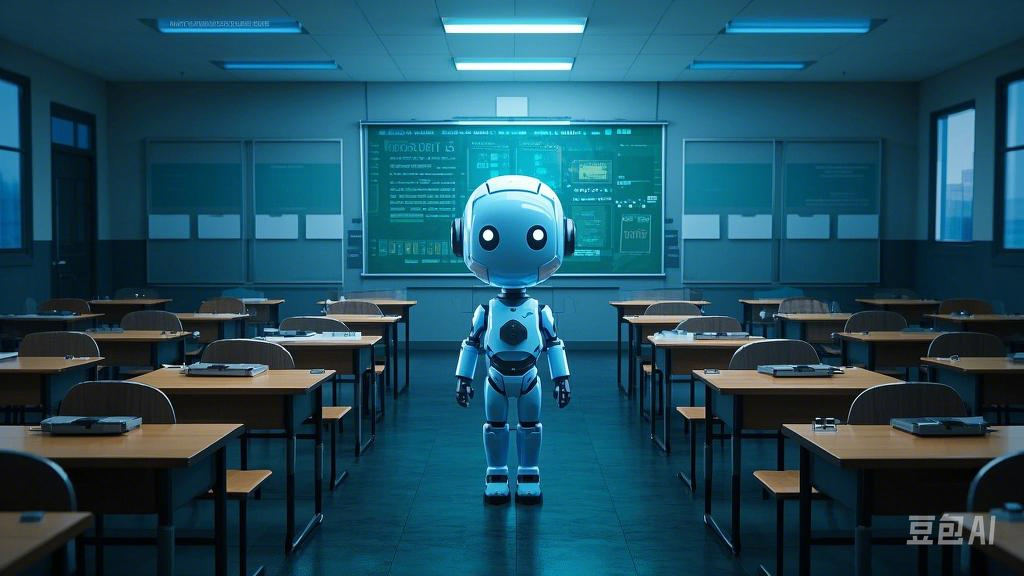
Beijing is bringing artificial intelligence (AI) into classrooms to get students ready for the future. Starting this fall, primary and secondary schools in the capital will __1__ at least eight class hours of AI instruction every year. Students will learn to use chatbots, know about basic AI technology, and talk about its __2__ use.
The Beijing Municipal Education Commission encourages schools to either mix AI with subjects like science or teach it __3__, hoping to make a long-term curriculum plan. As early as in 2017, the New Generation Artificial Intelligence Development Plan __4__ the base by making AI courses necessary in schools. Building on these foundations, the 2022 national IT curriculum made AI __5__ required content in the IT lessons.
In February 2024, the Ministry of Education __6__ 184 schools to test AI programs. Education Minister Huai Jinpeng called AI a “golden key” for modern education. Many Chinese tech __7__, like DeepSeek’s Liang Wenfeng, graduated from top universities such as Zhejiang University. By teaching AI from primary school early, Beijing hopes to train more __8__ innovators.
Meanwhile, __9__ countries are also bringing AI to students. Estonia worked with OpenAI to provide ChatGPT Edu __10__ high school students. South Korea uses AI-powered textbooks, and a UK school tried “teacherless” classes with VR headsets. In the U.S., tools like AI Reader help students study.
However, China is still careful about __11__ technological progress and ethical principles. The government made __12__ rules to ensure AI tools follow socialist core values. The United Nations’ call for humanity-centered AI is __13__ with China’s educational idea of training both __14__ and virtue, just like China’s way of all-around development.
__15__ AI becomes increasingly integrated into education, it is crucial to balance innovation with moral responsibility.
1.1.
A demand
B offer
C cancel
D delay
解析:选B。B 考查动词辨析。学校“提供”课程,符合上下文语义。故选B。
2.2.
A proper
B limited
C secret
D expensive
解析:选A。A 考查形容词辨析。讨论AI的“合理使用”,与后文ethical principles呼应。故选A。
3.3.
A naturally
B equally
C separately
D lonely
解析:选C。C 考查副词辨析。“将AI与其他学科结合”对应后半句的“单独教学”,形成对比。故选C。
4.4.
A destroyed
B ignored
C set
D forgot
解析:选C。C 考查固定搭配。“奠定基础(set the base)”是固定搭配。故选C。
5.5.
A a
B an
C the
D /
解析:选A。A 考查冠词辨析。content作“内容”时为可数名词,required为辅音字母开头,用不定冠词a。故选A。
6.6.
A closed
B selected
C fined
D avoided
解析:选B。B 考查动词辨析。“挑选”学校进行试点,符合行文逻辑。故选B。
7.7.
A teachers
B patients
C pioneers
D tourists
解析:选C。C 考查名词辨析。“科技先驱”与后文“创新者”呼应,其他选项与“tech”无关。故选C。
8.8.
A clever
B free
C experienced
D young
解析:选D。D 考查形容词辨析。结合前面的“By teaching AI from primary school early,”从小学开始早一点教授人工智能,可推断,北京希望可以培养更多“年轻的”创新者。故选D。
9.9.
A the other
B others
C other
D another
解析:选C。C 考查代词辨析。题空处后文为复数名词,用other修饰。故选C。
10.10.
A to
B with
C by
D at
解析:选A。A 考查介词辨析。provide sth. to sb.为固定用法。故选A。
11.11.
A ignoring
B balancing
C hating
D delaying
解析:选B。B 考查动词辨析。题空处与后文“平衡科技进步与伦理原则”直接对应。故选B。
12.12.
A strict
B loose
C rough
D difficult
解析:选A。A 考查名词辨析。政府制定“严格的”规则,确保AI工具符合价值观。故选A。
13.13.
A against
B away
C opposite
D in line
解析:选D。D 考查固定搭配。根据前文中“平衡科技进步与伦理原则”以及“The United Nations’ call for humanity-centered AI”联合国呼吁以人为本的人工智能,可知中国的理念与联合国呼吁相一致。be in line with 表示“与……一致”。故选D。
14.14.
A appearance
B talent
C behavior
D friendship
解析:选B。B 考查名词辨析。“全面发展”是中国教育的核心目标,因此需要训练学生的才能和美德。故选B。
15.15.
A As
B If
C Unless
D When
解析:选A。A 考查从句引导词辨析。句意:“随着”人工智能越来越多地融入教育,平衡创新与道德责任是至关重要的。故选A。